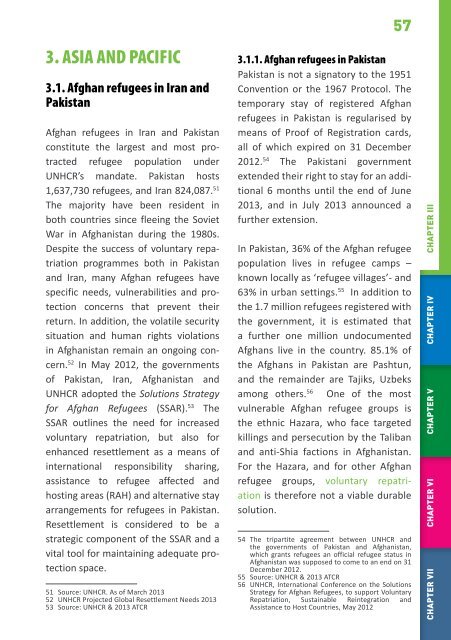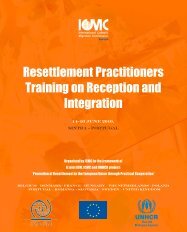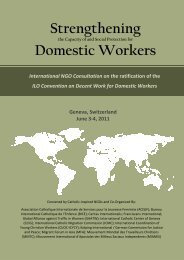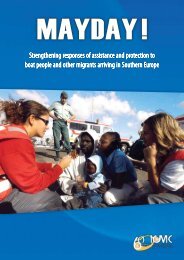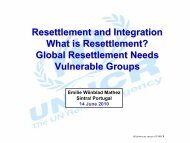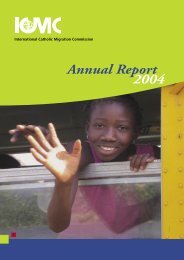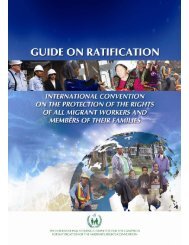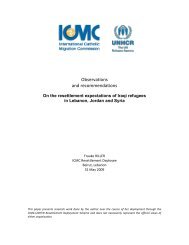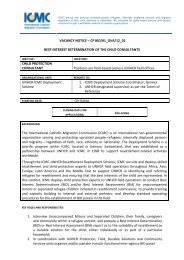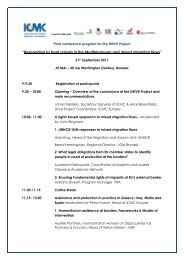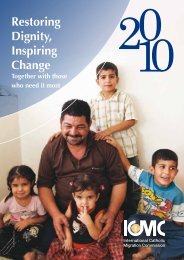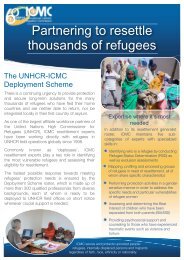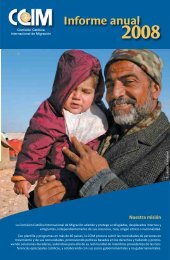ICMCEUROPE WelcometoEurope.pdf (5.89 MB)
ICMCEUROPE WelcometoEurope.pdf (5.89 MB)
ICMCEUROPE WelcometoEurope.pdf (5.89 MB)
You also want an ePaper? Increase the reach of your titles
YUMPU automatically turns print PDFs into web optimized ePapers that Google loves.
3. ASIA AND PACIFIC<br />
3.1. Afghan refugees in Iran and<br />
Pakistan<br />
Afghan refugees in Iran and Pakistan<br />
constitute the largest and most protracted<br />
refugee population under<br />
UNHCR’s mandate. Pakistan hosts<br />
1,637,730 refugees, and Iran 824,087. 51<br />
The majority have been resident in<br />
both countries since fleeing the Soviet<br />
War in Afghanistan during the 1980s.<br />
Despite the success of voluntary repatriation<br />
programmes both in Pakistan<br />
and Iran, many Afghan refugees have<br />
specific needs, vulnerabilities and protection<br />
concerns that prevent their<br />
return. In addition, the volatile security<br />
situation and human rights violations<br />
in Afghanistan remain an ongoing concern.<br />
52 In May 2012, the governments<br />
of Pakistan, Iran, Afghanistan and<br />
UNHCR adopted the Solutions Strategy<br />
for Afghan Refugees (SSAR). 53 The<br />
SSAR outlines the need for increased<br />
voluntary repatriation, but also for<br />
enhanced resettlement as a means of<br />
international responsibility sharing,<br />
assistance to refugee affected and<br />
hosting areas (RAH) and alternative stay<br />
arrangements for refugees in Pakistan.<br />
Resettlement is considered to be a<br />
strategic component of the SSAR and a<br />
vital tool for maintaining adequate protection<br />
space.<br />
51 Source: UNHCR. As of March 2013<br />
52 UNHCR Projected Global Resettlement Needs 2013<br />
53 Source: UNHCR & 2013 ATCR<br />
57<br />
3.1.1. Afghan refugees in Pakistan<br />
Pakistan is not a signatory to the 1951<br />
Convention or the 1967 Protocol. The<br />
temporary stay of registered Afghan<br />
refugees in Pakistan is regularised by<br />
means of Proof of Registration cards,<br />
all of which expired on 31 December<br />
2012. 54 The Pakistani government<br />
extended their right to stay for an additional<br />
6 months until the end of June<br />
2013, and in July 2013 announced a<br />
further extension.<br />
In Pakistan, 36% of the Afghan refugee<br />
population lives in refugee camps –<br />
known locally as ‘refugee villages’- and<br />
63% in urban settings. 55 In addition to<br />
the 1.7 million refugees registered with<br />
the government, it is estimated that<br />
a further one million undocumented<br />
Afghans live in the country. 85.1% of<br />
the Afghans in Pakistan are Pashtun,<br />
and the remainder are Tajiks, Uzbeks<br />
among others. 56 One of the most<br />
vulnerable Afghan refugee groups is<br />
the ethnic Hazara, who face targeted<br />
killings and persecution by the Taliban<br />
and anti-Shia factions in Afghanistan.<br />
For the Hazara, and for other Afghan<br />
refugee groups, voluntary repatriation<br />
is therefore not a viable durable<br />
solution.<br />
54 The tripartite agreement between UNHCR and<br />
the governments of Pakistan and Afghanistan,<br />
which grants refugees an official refugee status in<br />
Afghanistan was supposed to come to an end on 31<br />
December 2012.<br />
55 Source: UNHCR & 2013 ATCR<br />
56 UNHCR, International Conference on the Solutions<br />
Strategy for Afghan Refugees, to support Voluntary<br />
Repatriation, Sustainable Reintegration and<br />
Assistance to Host Countries, May 2012<br />
CHAPTER VI CHAPTER V<br />
CHAPTER IV<br />
CHAPTER III<br />
CHAPTER VII


